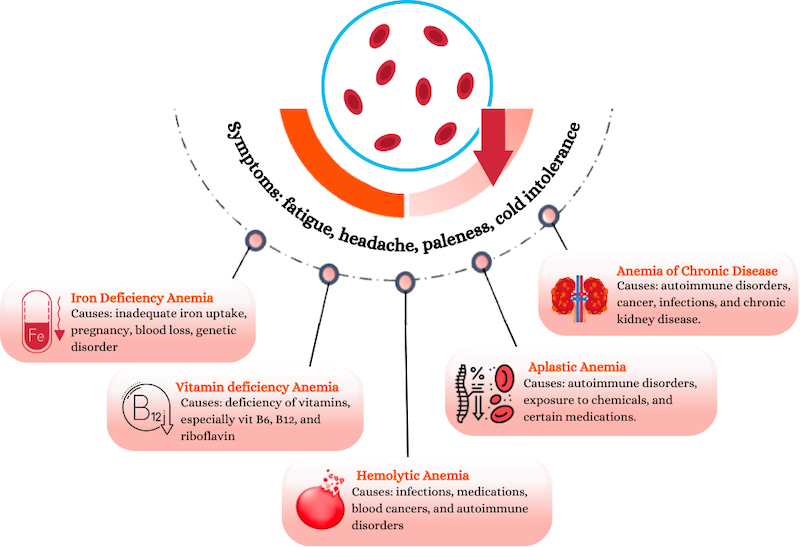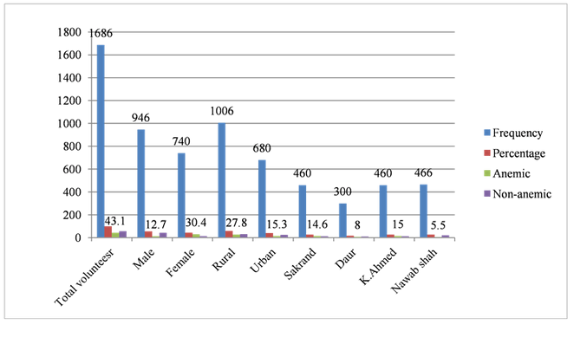Posted on March 9, 2025

Anemia is a common health condition that occurs when the body does not have enough healthy red blood cells to carry adequate oxygen to the tissues and organs. This results in symptoms like fatigue, weakness, shortness of breath, dizziness, and pale skin. Anemia can be caused by various factors, such as iron deficiency, vitamin B12 or folate deficiency, chronic diseases, and genetic disorders. While anemia is a global health issue, its prevalence is particularly high in developing countries like Pakistan, where nutritional deficiencies, lack of awareness, and limited access to healthcare contribute to its widespread occurrence.

Anemia can be classified into different types based on its cause, the most common being:

Anemia is a widespread health concern in Pakistan, affecting people across various age groups, but the most vulnerable populations are children, women, and pregnant women. According to various studies and reports from the World Health Organization (WHO), anemia in Pakistan is alarmingly common, and the country has one of the highest rates of anemia in South Asia.

The high prevalence of anemia in Pakistan can be attributed to a range of factors:


Anemia has a serious impact on public health, particularly in a developing country like Pakistan. Its effects are not limited to individual health but extend to the broader socio-economic and healthcare systems:
Tackling anemia in Pakistan requires a multi-faceted approach that involves government intervention, public health initiatives, and community awareness programs. Some key strategies include:
Anemia is a serious and widespread health issue in Pakistan, with significant implications for the country's population, particularly for women and children. While the causes of anemia are multifactorial, it is clear that improved nutrition, better healthcare access, and widespread education are essential in addressing this issue. Through coordinated efforts from the government, NGOs, healthcare providers, and the community, Pakistan can work towards reducing the prevalence of anemia and improving the health and well-being of its people.